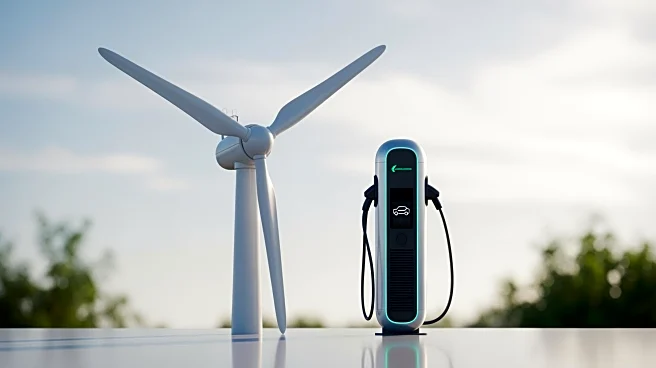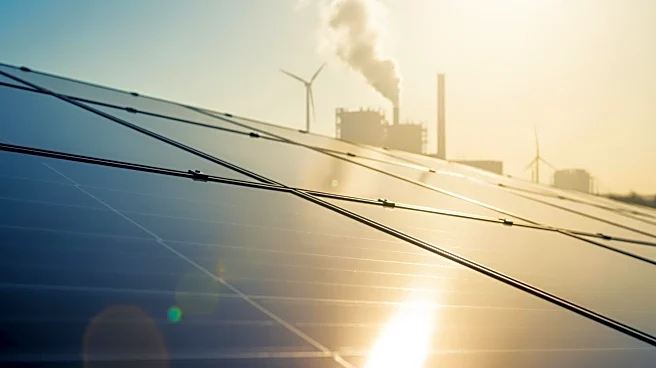What's Happening?
French researchers have made a significant breakthrough in 'blue energy,' a form of green energy derived from the natural pressure between freshwater and saltwater. This development, led by Bruno Mottet
and Lydéric Bocquet, involves a pilot project in the Rhône delta where the Rhône River meets the Mediterranean Sea. The process, known as osmotic power, can generate electricity continuously, regardless of weather conditions. The infrastructure required for osmotic power plants is simpler compared to hydraulic dams. Mottet and Bocquet's start-up, Sweetch Energy, has commissioned an osmotic power plant capable of producing 4 terawatt-hours of electricity annually. This advancement could potentially cover 15% of global electricity needs by 2030, significantly altering the energy landscape.
Why It's Important?
The development of osmotic power represents a major step forward in the quest for sustainable energy solutions. By harnessing the natural interaction between freshwater and saltwater, this technology offers a reliable and continuous source of electricity, which could reduce dependence on fossil fuels and contribute to global efforts to combat climate change. The ability to generate power 24 hours a day without being affected by weather conditions makes osmotic power a promising alternative to traditional renewable energy sources like solar and wind. If successfully scaled, this technology could play a crucial role in meeting global energy demands and advancing the transition to a cleaner energy economy.
What's Next?
The next steps involve overcoming technical and financial barriers to fully integrate osmotic power into the renewable energy landscape. Sweetch Energy's efforts to make osmotic power more accessible will require strategic alignment across sectors, including policy, infrastructure, and consumer behavior. As the technology matures, it will be essential to address the initial costs and adapt existing power grids to accommodate the dynamic needs of combined solar-EV systems. The success of this initiative will depend on continued innovation and collaboration among stakeholders to ensure that osmotic power becomes a viable and cost-effective solution for sustainable energy production.














